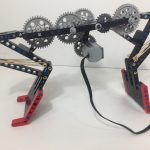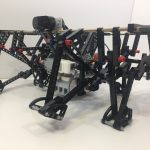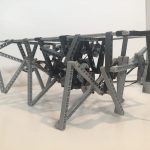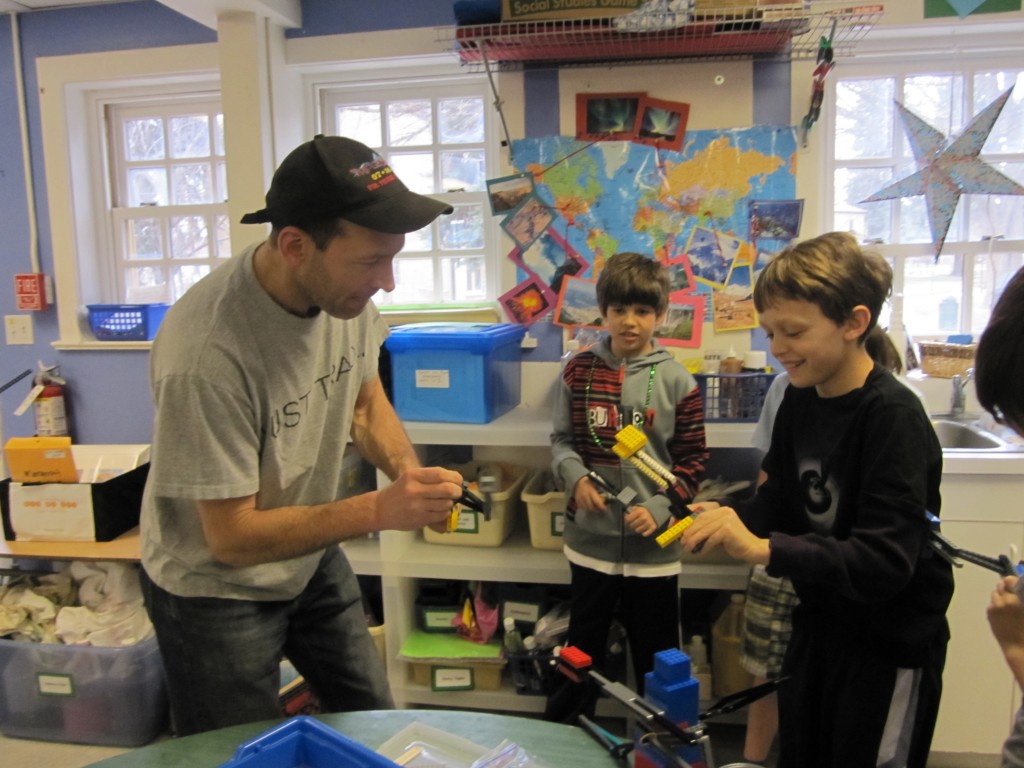
Before attempting to build walking robots like TrotBot and Strider, we first played with linkages in a few simpler challenges like “punchers”, which utilize a 4-bar linkage to create a simple robotic arm. Here’s a video of my nephew Theo battling and explaining how his puncher works:
[Please note: Safety glasses should be worn when battling – Editor]
4-bar linkages are great for introducing students to mechanical linkages since they are relatively simple to build and understand. Plus, the low bar count means the mechanism tends to be sturdier and more efficient than mechanisms based on 6-bar or 8-bar linkages. This makes 4-bar linkages the optimal solution for many applications, such as mountain bike suspensions.
4-bar linkages can be configured in an infinite number of ways by changing the bar lengths, which can change the linkage’s behavior dramatically. Below are some of the major categories of 4-bar linkage behavior, created by re-arranging the yellow, white, orange and red bars:
You can find Puncher building instructions here, along with an online simulator to test how changing the linkage’s bar lengths changes how it punches. Here is an example:
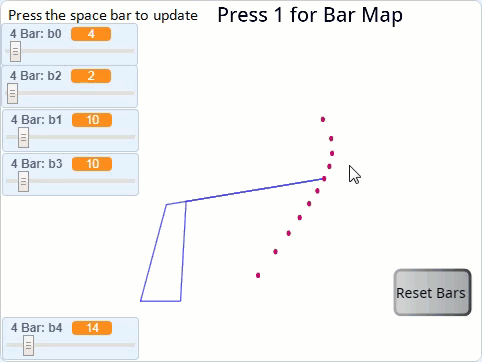
[Update May 14, 2019]
These punchers can also be motorized, but this requires converting the circular motion of the motor to oscillation. This can be done by programming the motor to do a partial rotation, or by adding a crank and a 6th bar to the mechanism as done in the following video.
Motorized punchers could also be added to mobile robots to create a type of “Boxing Bot”, but the robot’s frame would need to be strong enough to handle the puncher’s oscillating force. If you were to play with this idea, I recommend using shorter beams to reduce the weight and inertial forces generated by the punching action. Boxing Bots would work well as an EV3 build as the weight of the brick would help to absorb the inertial forces.
Also in DIY Walkers
- Rapidly Prototyping Strider – Smoother, Stronger, Faster
- Linkage Warm Ups 1: LEGO Punchers and the 4-Bar Linkage
- Linkage Warm Ups 2: LEGO Jumpers and Hoppers
Latest posts by Wade (see all)
- Linkage Warm Ups 2: LEGO Jumpers and Hoppers - 28 May 2019
- Linkage Warm Ups 1: LEGO Punchers and the 4-Bar Linkage - 13 April 2019
- Rapidly Prototyping Strider – Smoother, Stronger, Faster - 30 August 2018
- How to build and safely use a bridge tester - 10 July 2015
- TrotBot Walking Machine - 5 July 2015
